Did you know that some of the most expensive coffees in the world can cost up to $600 per pound? These luxurious brews come with fascinating stories, unique production processes, and incredible flavors.

Have you ever wondered why some coffee beans are so much more expensive than others? There's much more to expensive coffees than just the price tag. We're talking about the rarest coffee cherries, carefully crafted production methods, and a lot of passion.
In this article, we'll explore the top most expensive coffee in the world, uncovering the stories behind each one and seeing what makes them worth the splurge. From legendary beans that pass through wild civets to coffee grown on remote islands, there's much to discover in the world of specialty coffee.
Kopi Luwak ($100 to $600 per pound)
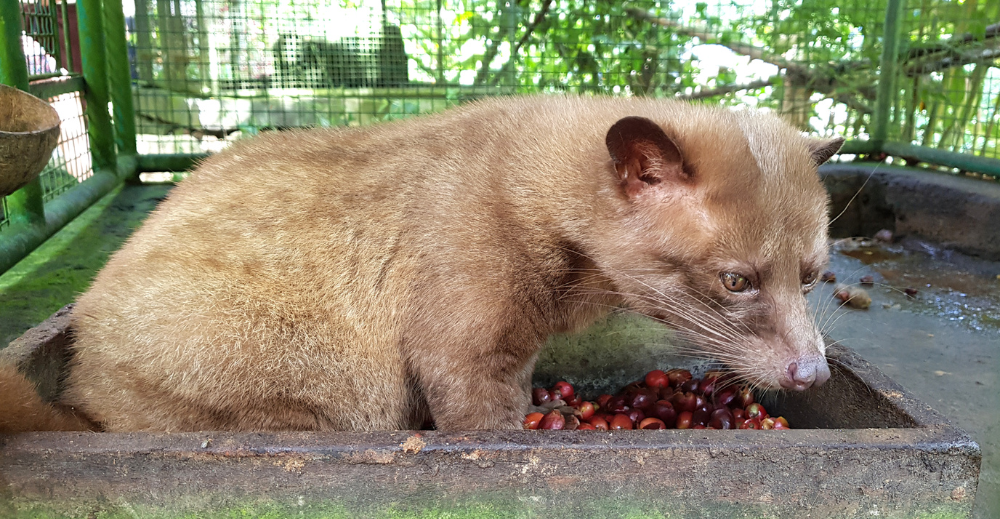
Kopi Luwak isn't your typical coffee, and no, it's not one of those marketing gimmicks either. It has a reputation for being unique and, let's be honest, a little eccentric. The magic happens in Indonesia, where coffee beans take a rather unusual journey before they land in your cup.
The twist? Civet cats eat these as part of their natural diet, and then, well, let's say they come out the other end. It sounds strange, but it's this process that makes it rare coffee.
How It's Made
The production process starts with the civet cats, which are small, cat-like creatures roaming the Indonesian forests. These little guys have a thing for coffee cherries—especially the ripe, juicy ones. They eat the cherries, and while the beans pass through their digestive system, fermentation happens.
Once the beans make their way out, they’re collected, cleaned (very thoroughly), and roasted. This whole journey is what gives this coffee its unique flavor.
How Is It Cleaned?
The cleaning process for this particular type of beans is meticulous and thorough. After being collected from the civet's droppings, the beans are initially rinsed to remove loose debris. They are then washed multiple times to ensure all waste materials are eliminated.
The beans are dried, hulled to remove the parchment layer, and carefully sorted for quality. Finally, the beans are roasted, which not only enhances their unique flavors but also ensures they are safe and hygienic for consumption. This extensive cleaning and preparation process for roasted beans is crucial to maintaining the high standards of Kopi Luwak coffee.
What Does It Taste Like?
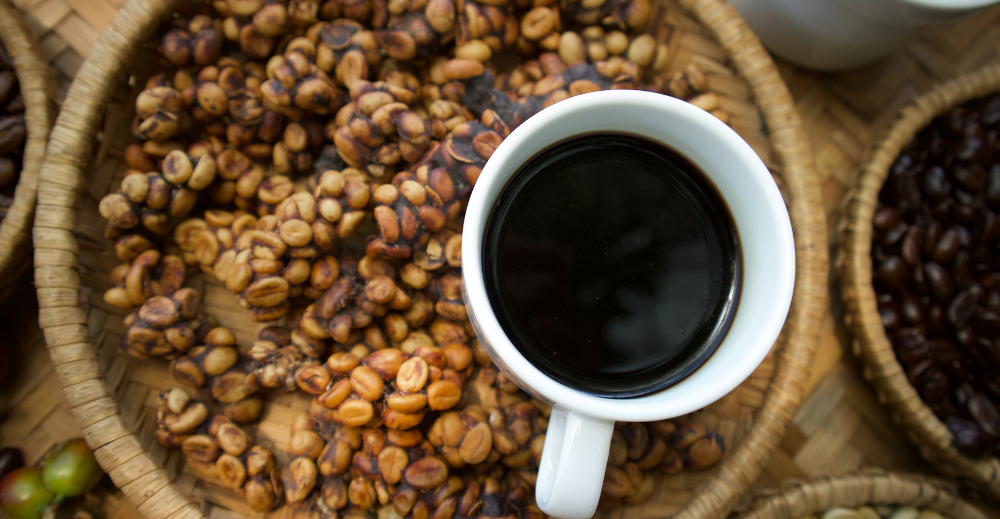
So, what does all this mean for the flavor? Well, fans rave about its exceptionally smooth texture and low acidity, which makes it incredibly easy to drink. The flavor is unlike anything you'll find in a typical cup of coffee—earthy with delightful hints of caramel and nuts, and occasionally a touch of chocolate.
And the aroma? It's rich and complex, enveloping you in a luxurious scent that's far from your average cup of joe. This unique combination of flavors and aromas is what sets Kopi Luwak apart, offering a truly distinctive coffee experience.
Why Is It So Expensive?
It is one of the highest-priced coffee in the world. Depending on where you buy it, prices range from $100 to $600 per pound. Part of the reason for this high cost is the labor-intensive process of collecting and processing the beans.
There's also the rarity factor—only about 500 to 700 kilograms of Kopi Luwak are produced each year, making it incredibly scarce. This limited availability puts it in high demand among coffee connoisseurs who are eager to experience its unique flavors.
The Controversy
Now, before you start thinking about trying a cup, let's talk about the controversy surrounding this coffee. The growing demand has led some producers to keep civet cats in cages, often in pretty rough conditions, to increase production. This raises many ethical concerns about animal cruelty.
As a result, some people are pushing for more humane and sustainable practices, like letting the civet cats roam freely and collecting the beans naturally. If you're interested in trying this coffee, it's worth doing some research to ensure you're supporting ethical sources.
Kona Coffee ($20 to $50 per pound)
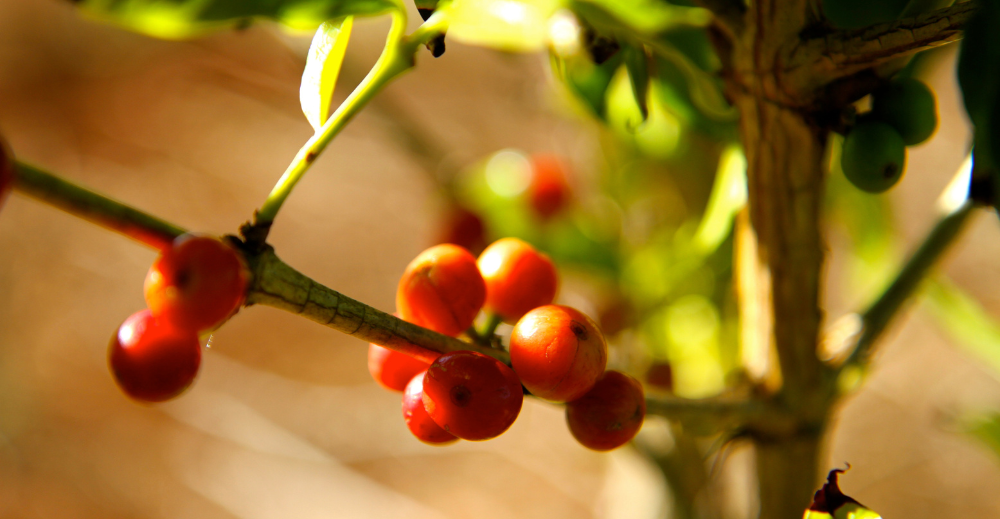
Kona is one of those names that gets coffee lovers all excited, and for good reason. This coffee comes from Maui county in Hawaii, specifically from the Kona district on the Big Island. The region has an almost magical combination of volcanic soil, perfect climate, and just the right amount of rainfall.
This creates ideal conditions for growing some pretty amazing beans. This coffee has earned a reputation in coffee industry for being high-quality and is often considered one of the world's best and most expensive coffees.
How It's Made
The Kona region has a unique climate that's a dream for coffee growers. The volcanic soil is rich in minerals, providing excellent nutrients for the coffee trees. The weather is pretty much perfect—warm days with just the right amount of rain and cooler nights. This setup allows the coffee cherries to ripen slowly, which helps develop a deeper, more complex flavor.
The coffee industry production is also pretty hands-on, with many farmers using traditional methods to grow, harvest, and process the beans. They often hand-pick the ripe coffee cherries, to ensure only the best ones make it into the final product. Wet processed beans often yield a more consistent, cleaner, cup that is said to preserve the coffee's flavor.
What's the Flavor Like?
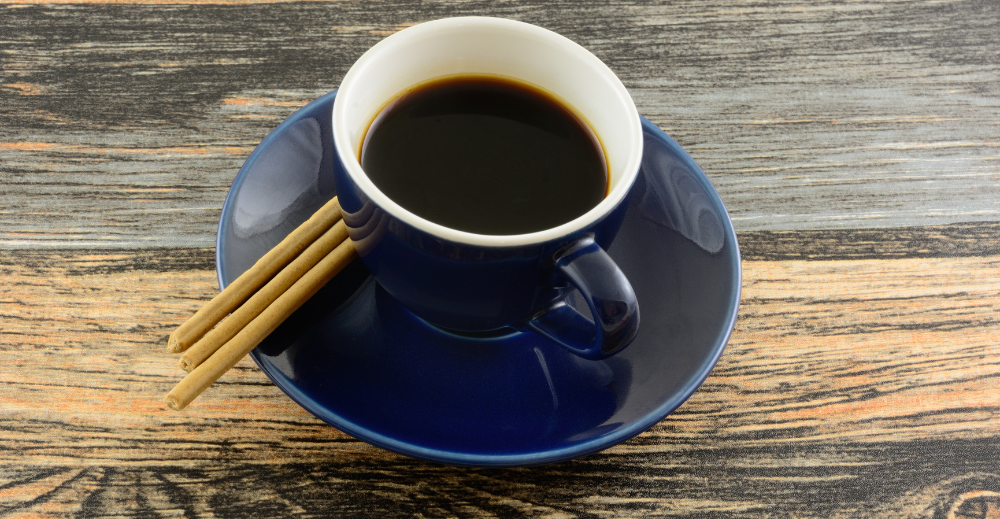
This coffee has a smooth, mellow flavor with a medium body, which makes it easy to drink. It's known for its balanced acidity and bright, clean finish. You might pick up on subtle fruity notes, like citrus, along with a hint of nuttiness.
The aroma is often described as floral and sweet, with a slight earthy undertone. It's the kind delicate cup of coffee you could enjoy black or with a splash of milk—it’s just that versatile.
Why Is It So Expensive?
This coffee can be pricey, with an average cost ranging from $20 to $50 per pound, depending on the brand and quality.
The high price is due to a few factors:
-
Unique growing conditions in Kona are hard to replicate elsewhere.
-
Labor-intensive process of hand-picking and processing.
-
Limited supply.
Because Kona is a relatively small region, only a limited amount of coffee can be produced each year, making it somewhat of a luxury item.
What Makes Kona Coffee Special?
One of the things that sets this coffee apart is its strict regulations. For coffees to be labeled "Kona," it must come from the Kona district and meet specific quality standards. This ensures you're getting the real deal and not just a blend with a touch of Kona.
The commitment to quality and tradition makes this coffee unique and highly valued among coffee enthusiasts.
Geisha Coffee ($50 to $100 per pound)
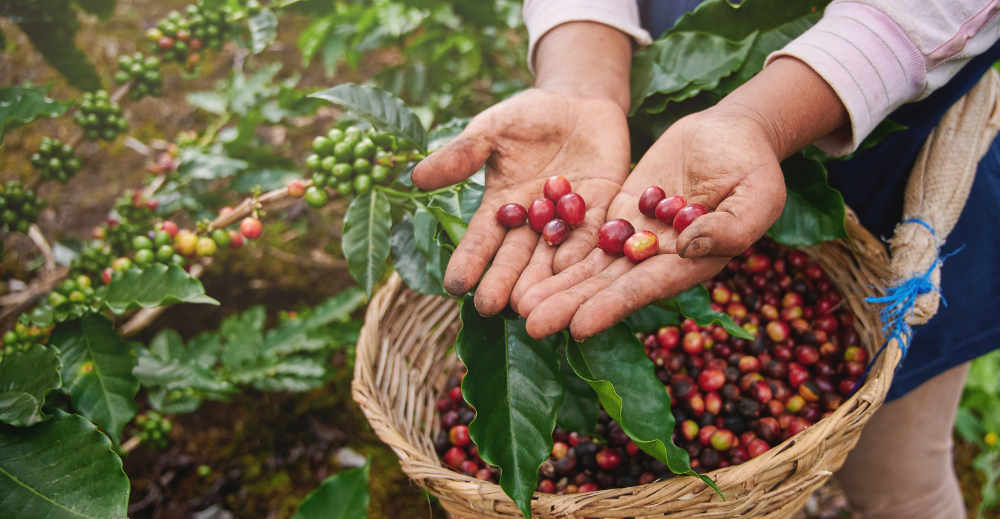
When people talk about high quality coffees in the world, Geisha often comes up. It's a variety with roots in Ethiopia but has made a big splash in Central America, particularly in Panama. While Ethiopia is recognized as the birthplace of coffee, the farms in Panama have brought this unique bean into the spotlight, especially through the prestigious Panama competition.
How It's Grown
The production process is where the magic happens. The Geisha variety requires specific conditions to flourish—high altitudes, consistent rainfall, and a good balance of sunlight and shade.
The farmers who cultivate it are meticulous, focusing on every detail, from the soil's mineral content to the timing of the harvest. This attention to detail is what helps create the complex flavors that make Geisha a specialty coffees.
What It Tastes Like
The flavor profile is what sets this coffee apart. It's known for its floral and fruity notes, which are often described as jasmine-like with hints of bergamot and other citrus fruits. There's also a subtle sweetness that adds to the complexity.
This unique combination of flavors has earned it a reputation as one of the most sophisticated and enjoyable coffees out there.
Why It's So Pricey
Geisha coffee isn't cheap. Depending on the quality and where you buy it, it can cost anywhere from $50 to $100 per pound or even more.
The high price tag is due to a few factors:
-
Limited supply
-
Labor-intensive cultivation process
-
The fact that it’s a sought-after bean among coffee lovers.
Because it's grown in special areas and needs a lot of care, there's only a little available each year, making it a premium item.
Saint Helena Coffee ($40 to $80 per pound)
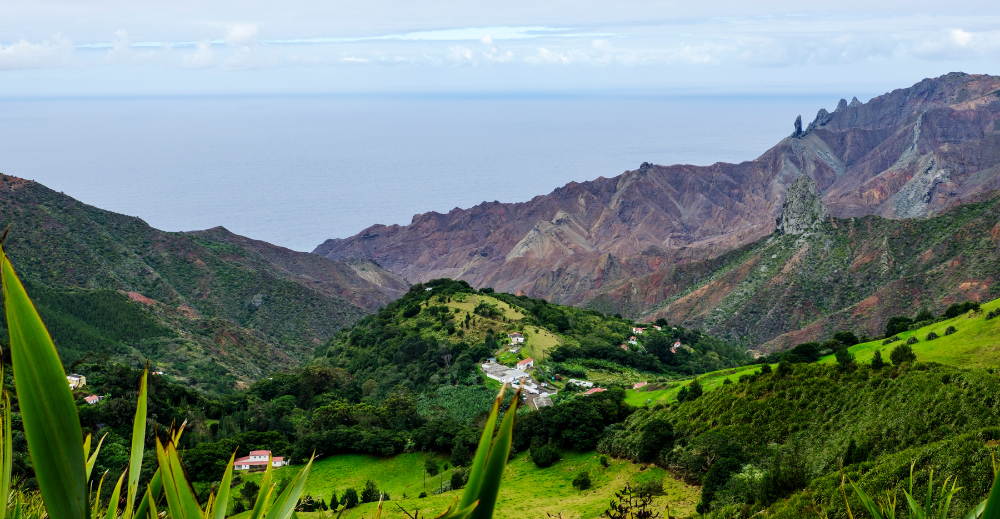
St. Helena coffee is one of the rarest coffees, and it comes from a place you might not expect. St. Helena is a tiny island in the middle of the South Atlantic Ocean, about halfway between Africa and South America.
The island's unique climate and geography make it a surprisingly great spot for growing coffee. It's also known for its historical significance—Napoleon Bonaparte was exiled here and had a thing for the local coffee, which adds to its allure.
How It's Grown
The production process for this coffee is quite unique because of the island's isolated location. The volcanic soil on St. Helena is rich in minerals, providing a fertile ground for coffee cultivation. The island's climate is mild, with plenty of rainfall, which helps the coffee trees thrive.
Because St. Helena is so remote, there's little risk of diseases that often affect coffee crops, allowing the whole beans to grow more naturally and organically. The farmers here pay close attention to every step of the coffee growing process, from planting to harvesting, to ensure the best quality.
What Does It Taste Like?
St. Helena coffees have a distinctive, smooth, complex flavor profile. It's known for its bright acidity and clean, crisp finish. When you take a sip, you might notice hints of citrus, a touch of caramel, and a subtle earthiness.
The aroma is quite fragrant, with floral and fruity notes that make it a pleasure to brew. Overall, it's a balanced coffee that's easy to enjoy on its own or with a splash of cream.
Why Is It So Expensive?
This is one of the world's most expensive and rare coffees, with the highest price ranging from $40 to $80 per pound. The high cost is due to its limited production and the island's remote location, which makes exporting the beans a logistical challenge.
Since only a limited amount of coffees can be produced on St. Helena each year, it tends to fetch the highest price among coffee connoisseurs.
The Historical Connection
One of the intriguing aspects of this coffee is its historical link to Napoleon Bonaparte. During his exile on the island, he was known to enjoy the local coffee, which has added a touch of romance and mystique to its reputation.
This historical connection has made St. Helena coffees a favorite among history buffs and coffee enthusiasts, adding to its charm and exclusivity.
Hacienda La Esmeralda ($500 to $700 per pound)
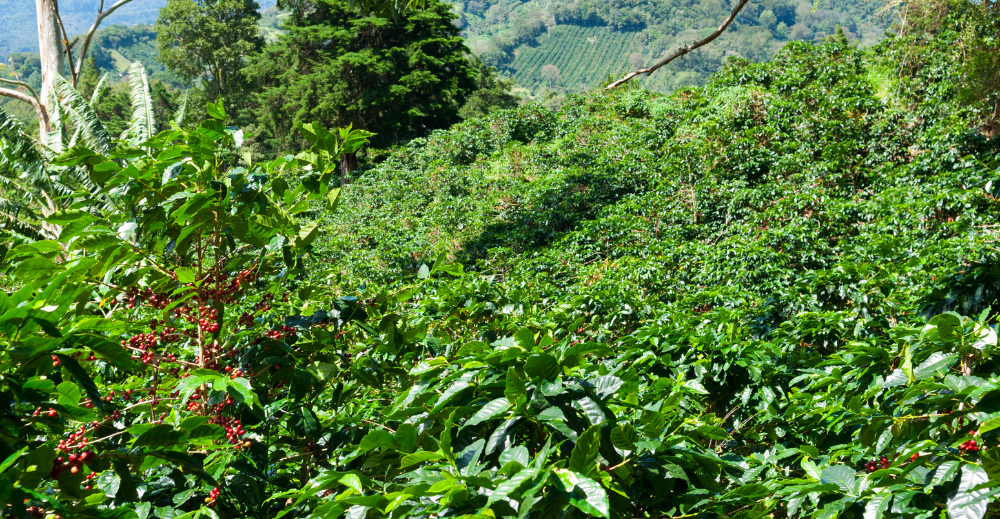
Hacienda La Esmeralda is a name that turns heads in the coffee world. Located in Panama, this farm has made a big splash with its high-quality beans.
It's known for its stunning location in the Boquete region, nestled in the lush mountains where the weather is perfect for growing coffee. This place is not just famous; it's legendary, especially for its Geisha variety, which has won all sorts of awards.
How Is It Grown?
The people at La Esmeralda take coffee production seriously. They use meticulous farming practices, paying close attention to every detail. The farm sits at a high altitude, providing just the right mix of cooler temperatures and sunlight. The rich and volcanic soil is great for growing strong, healthy coffee trees.
Harvesting black cherry here is done by hand to ensure only the ripest cherries are picked. This careful approach carries through to the processing, where traditional methods are used to preserve the beans' unique characteristics.
What's the Flavor Like?
The flavor profile is what makes this coffee stand out. It's known for its vibrant acidity, which gives it a lively and refreshing taste. You might catch hints of jasmine, bergamot, and tropical fruits like passionfruit and guava. A certain sweetness balances everything out, making each sip a delightful experience. The aroma is equally captivating, with floral and fruity notes that can fill a room.
Why Is It So Expensive?
The highest price for this coffee is no joke. It's considered one of the most expensive coffees in the coffee industry, with some batches selling for hundreds of dollars per pound.
The price is driven by the farm's reputation, the limited supply of these special beans, and the intense demand among coffee lovers. Because each batch is unique and carefully crafted, it's no wonder people are willing to pay top dollar to get their hands on it.
Final Word on What Makes Specialty Coffee Bean Worth It

Exploring the world of luxury coffees opens up a whole new appreciation for the artistry and effort behind each cup. These brews offer an extraordinary experience, blending rare flavors and exceptional aromas that captivate coffee lovers around the globe.
Have you tried any of these rare coffees? What was your experience like? Share your thoughts in the comments below. We'd love to hear about your favorite luxury brews and what makes them special to you.






Leave a comment